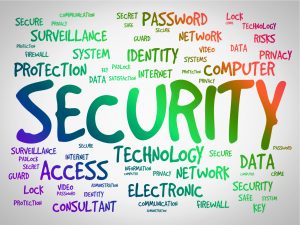Security is an everlasting concern for enterprise IT. Here’s what experts say are some of the top security trends to watch in 2021 – as “normal” gets redefined.
 Here’s one prediction that you can bet on: Forecasting enterprise security trends will never go out of style. That’s not a bold call but it’s a bankable one. Technology trends come and go, but security is an everlasting issue. There’s no finish line where everyone gets to clink glasses and declare: “All secure!”
Here’s one prediction that you can bet on: Forecasting enterprise security trends will never go out of style. That’s not a bold call but it’s a bankable one. Technology trends come and go, but security is an everlasting issue. There’s no finish line where everyone gets to clink glasses and declare: “All secure!”
In the same vein, security trends tend to be a consistent mix of “old” – think phishing scams and malware – and “new,” such as the COVID-19 pandemic and its widespread impacts on organizations and individuals. That was true in 2020 and it will remain so in 2021.
We asked a wide range of IT and security leaders to share with us their insights and top security trends to watch in the year ahead. Here’s what they are keeping tabs on as we open a new calendar – and what IT leaders should be paying attention to as well.
1. The new normal for the security architect(ure)
We’ll likely see organizations re-clarify their security focus – though potentially with new constraints – because security didn’t necessarily top priority lists in 2020.
In particular, organizations will more intentionally begin adapting their security playbooks to reflect the lasting changes to how they operate, including remote workforces.
“The focus on the need for stability and operational efficiency in 2020 because of the pandemic has deflected the attention and focus on security,” says E.G. Nadhan, chief architect and strategist, North America, Red Hat. “With the gradual transition to the new normal, security will get renewed focus, reviving the proactive execution of security strategies.”
Those strategies will need to become more intentional about the realities of remote work and other lasting changes to how many businesses will operate. “Normal” has been permanently redefined; security programs will need to adapt accordingly.
Securing the next normal will be a top priority for 2021. Following the seismic shift to remote working, we will continue to see an increased focus on securing beyond the perimeter and cloud deployments.
This isn’t solely a matter of remote workers. It’s fundamentally an architecture issue, especially as cloud-native applications and infrastructure become more common.
2. Automation will help support a security-first approach to architecture
“A key area I see for cybersecurity in the years to come is related to businesses seeking methods to innovate and build software at quicker speeds,” says Chris Wyspoal, founder and CTO, at Veracode.
Automation becomes not just nice-to-have but necessary.
To secure all that work happening at speed, enterprise IT organizations will pursue integration, automation, and orchestration of cybersecurity systems’ workflows.
“Various functional cybersecurity securities will be tied together to form an orchestrated system to handle identification of vulnerabilities, attack vectors, and automated remediation workflows,” says Michael Cardy, Red Hat’s Chief Technology Strategist and Director, Solution Architecture, Canada.
3. Phishing and ransomware remain ubiquitous – and the home office will be under siege
You’ll be hard-pressed to find many security pros predicting a sharp decline in phishing scams, ransomware, and other common attack methods in 2021. These threats exist because they work – and that’s not going to change in 2021.
“Phishing and ransomware will continue to be a primary means for malicious activity,” says Mitchell Kavalsky, director of security governance, risk and compliance at Sungard AS.
In 2021, these already widespread threats will increasingly target the many thousands of people who will continue to work from home indefinitely.
Educating employees about how to keep their home environments secure is more critical than ever, and one of the top security trends to watch in 2021.
“There will be an increase in attacks on personal emails and systems in the coming year,” Kavalsky says. “More people are working from home than ever before, and with that trend not changing any time soon, attackers will go after people’s personal systems. Since they are typically running on the same home network as their work laptop, hackers will use that as a conduit to gain access to the work laptop. Diligence in preserving and protecting not only work but home systems will be of the utmost importance.”
The shift to working from home (in businesses where that was possible) was a 2020 story, and Sixgill CEO Sharon Wagner says that both companies and individuals alike handled the rapid transition quite well. But the security impacts of widespread remote work – and employee homes becoming significant entry points into corporate systems – haven’t really landed yet. That’s the 2021 story.
“While the cybersecurity fallout of this global shift has yet to be felt, it’s likely we will see a spike in data leaks and breaches on endpoints in the next year,” Wagner says. “The shift to remote work brought with it increased risks of attacks on home networks, personal devices, and other endpoints that are now more exposed than ever.”
Educating employees about how to keep their home environments secure is more critical than ever.
For four more security trends, read the full story here – 7 Security Trends to Watch in 2021
This article, by Kevin Casey, first appeared on The Enterprisers Project, and has been shared under the CC-BY-SA license.
Handpicked Related Content:
Handpicked Related Content:


